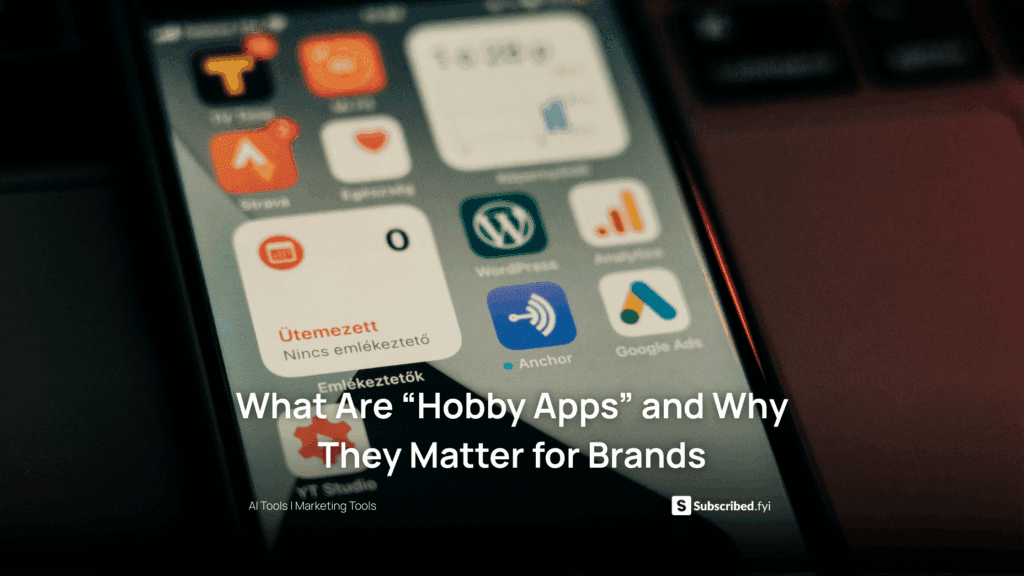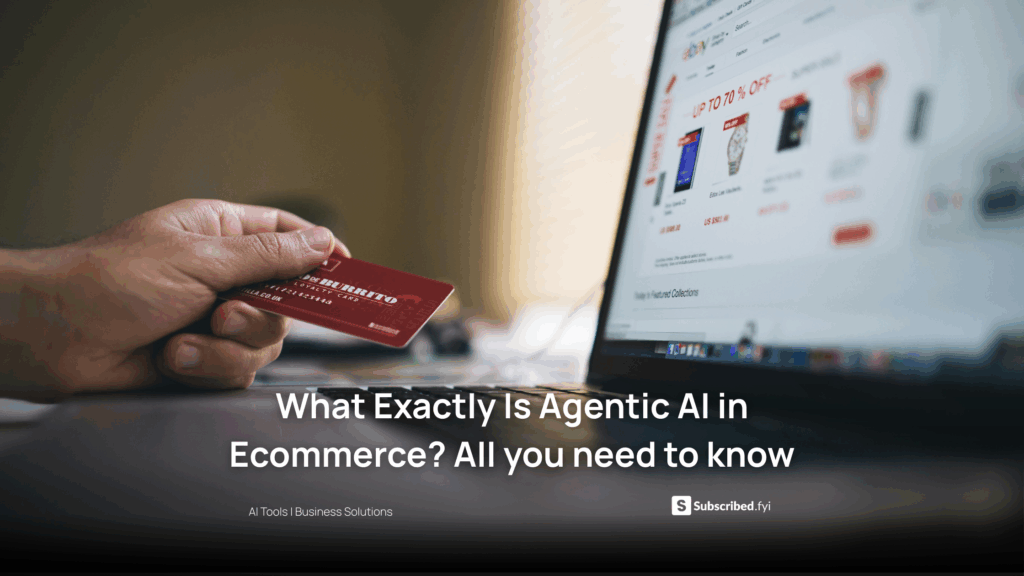What Are the Benefits of Headless Commerce for Startups?
- WebOps Platforms Bug Tracking & Feedback Software Web Development & Design Website Builder


Startups today need to move fast, stay flexible, and deliver seamless shopping experiences across web, mobile, and IoT devices. Headless commerce decouples the frontend storefront from the backend commerce engine, giving you ultimate control over design and user experience. With an AI-powered no-code platform like Hostinger Horizons, you can prototype a custom storefront, connect to popular commerce engines via API, and preview changes in real time. If you’d like to see other no-code options, explore the Vibe Coding directory for builders that specialize in rapid iteration and headless integrations.
Beyond speed and design freedom, headless commerce helps startups scale without major reengineering. You maintain a slim, focused backend—Shopify, BigCommerce, or a custom commerce API—while your frontend evolves independently. AI-driven tools such as those on the AI-powered website builders page, including Bolt for performance optimization or Tempo for prototyping, let you tailor experiences for each channel without writing a single line of traditional code.
Understanding Headless Commerce
Headless commerce refers to the architectural approach where the “head” (the frontend user interface) is separated from the “body” (the backend commerce platform). This separation is typically accomplished through APIs—often called storefront or commerce APIs—that deliver product data, inventory status, pricing, and customer information to any frontend channel.
What headless commerce means for startups
Traditional ecommerce platforms bundle frontend templates, hosting, and backend logic into a single package. While that makes setup easy, it also forces you into rigid design patterns and slow upgrade cycles. Headless commerce lets you choose best-of-breed systems: a fast, flexible storefront built with no-code tools like Hostinger Horizons, paired with a robust backend from Shopify or BigCommerce. You get the speed of modern frontends without sacrificing commerce features.
Why startups are adopting headless architectures
Many startups begin with simple sites, but as they grow, they need unique designs and custom features—such as interactive product configurators or localized experiences for different markets. A headless setup makes it possible to launch new channels—a mobile app, a kiosk interface, or even an in-store digital display—by reusing the same backend APIs. This agility lets startups experiment quickly, gather feedback, and iterate without disrupting their core commerce engine.
Flexibility in Frontend Development
One of the biggest advantages of headless commerce is the freedom to design and build unique frontends. You’re not limited by platform templates or theme editors.
Tailoring the storefront to your brand
With a headless approach, you build the user interface in your preferred framework—React, Vue, or even a no-code builder like Hostinger Horizons. Simply describe your layout needs in the AI chat (“build a product grid with hover effects and quick view modals”), and the platform generates the code, deploys it, and lets you preview updates instantly in its real-time sandbox.
Delivering consistent experiences across channels
Your backend API serves the same product data to every frontend channel. Whether a customer shops on desktop, mobile, or in a native mobile app, they see consistent pricing, inventory, and promotions. This omnichannel consistency builds trust and reduces customer support issues caused by mismatched information.
Scalability and Performance Improvements
A monolithic ecommerce platform can become sluggish under heavy traffic or complex customizations. Headless commerce offers performance benefits that are critical for startups aiming to scale.
Faster page loads and better Core Web Vitals
Separating the frontend from the backend lets you deploy static assets on a content delivery network (CDN) and serve dynamic content via lightweight API calls. Platforms like Bolt focus on performance optimization, but with Hostinger Horizons’ built-in CDN and asset minification, you get fast load times out of the box. Faster pages mean happier users and better search rankings.
Scaling backend and frontend independently
If your storefront needs heavy personalization or complex animations, you can scale resources for that layer separately. Meanwhile, your backend commerce engine handles transactions, inventory updates, and business logic. This decoupling ensures one layer’s high traffic doesn’t bring down the entire system.
Accelerated Time to Market
Startups need to launch quickly and iterate even faster. Headless commerce aligns perfectly with agile development.
Parallel development streams
With headless architecture, frontend and backend teams work in parallel. Your commerce platform team configures product catalogs, pricing, and checkout logic, while the frontend team builds UI components and customer journeys. No more waiting for one side to finish before starting the other.
Instant previews and deployments
No-code solutions like Hostinger Horizons let you see changes immediately. Type “deploy updated checkout flow” and the AI updates your staging environment for end-to-end testing. Once approved, you “promote staging to production” with one click, slashing deployment times from days to minutes.
Enhanced Security and Compliance
Headless commerce can improve security by reducing the attack surface and simplifying compliance.
Isolated frontend reduces vulnerabilities
Since your frontend is static and communicates with the backend only over secure APIs, there’s less server-side code exposed to attacks. This separation allows you to harden your backend commerce API while keeping the frontend lean.
Simplified compliance with regulations
Commerce platforms like Shopify are PCI-compliant and handle payment security. Your headless frontend never touches sensitive card data; it simply redirects customers to the secure checkout API. For GDPR or CCPA compliance, you can configure consent banners and data-request workflows through your frontend no-code builder, then store consent flags in your backend via API calls.
Integration and Customization Capabilities
Headless commerce shines when you need to integrate third-party services or build custom features.
API-driven integrations
Every data point—products, customers, orders—is available via your commerce API. You can connect to marketing automation, CRM, analytics, or custom fulfillment systems using simple HTTP requests. Ask your AI builder, “integrate email signups with Mailchimp via API,” and let the platform configure webhooks and data mappings automatically.
Custom features without platform limits
Need a loyalty program? Embed a custom reward widget that pulls data from your loyalty API. Want real-time inventory maps? Connect to a warehouse management system and show stock levels on the product page with live updates. With headless commerce and a tool like Hostinger Horizons, you build these custom elements in no-code or low-code workflows, without wrestling with monolithic platform constraints.
Cost Efficiency and Maintenance
Startups need to manage budgets carefully. Headless commerce can reduce both upfront and ongoing costs.
Pay for what you use
Instead of licensing a full ecommerce suite, you can choose pay-as-you-go APIs for headless commerce and host lightweight frontends on affordable platforms. With Hostinger Horizons, your hosting, domain, SSL, and AI chat are bundled, eliminating surprise expenses when traffic spikes.
Easier maintenance and upgrades
Frontends built on modern frameworks or no-code platforms receive incremental updates—think library patches or plugin upgrades—without downtime. Your backend commerce engine handles critical business logic updates independently. This modular maintenance approach reduces risk and keeps your app running smoothly.
Getting Started with Headless Commerce on Hostinger Horizons
While headless commerce offers many benefits, setting it up can seem complex. Hostinger Horizons simplifies every step through its AI chat interface and managed infrastructure.
Scaffolding a custom frontend
Describe your storefront needs—header with logo and cart, product listing grid, dynamic filters—and ask the AI to “build React storefront with Tailwind CSS.” Horizons generates the code, deploys to its sandbox, and gives you a live preview.
Connecting to commerce APIs
Whether you use Shopify, BigCommerce, or a custom API, instruct “connect storefront to Shopify using storefront API key.” Horizons configures environment variables, sets up authentication flows, and maps product queries to your frontend components.
Testing and launching
Use the sandbox environment to test user flows—add to cart, checkout, order confirmation—across devices. When you’re ready, type “launch storefront to production domain,” and the AI handles DNS, SSL, and CDN configuration. Your headless commerce site is live with minimal manual steps.
Real-World Startup Use Cases
Custom mobile commerce app
A fashion startup needed a unique mobile shopping experience beyond what Shopify themes offered. By decoupling the frontend with headless commerce and building the UI in Hostinger Horizons, they launched an app with swipeable product carousels and personalized lookbooks. Sales grew by 30% thanks to the tailored design.
International expansion
A health-food brand wanted to sell in five countries with localized pricing and language. With headless commerce, they used storefront APIs to pull region-specific data, and Hostinger Horizons’ multi-language support managed translations across all pages. They rolled out new markets in weeks instead of months.
Future Trends in Headless Commerce
Headless commerce continues to evolve, driven by new frontend frameworks, API standards, and AI capabilities.
Progressive Web Apps and SPAs
PWAs offer app-like experiences in the browser, with offline support and push notifications. Headless commerce frontends built as SPAs provide seamless transitions and faster interactions, boosting engagement.
AI-driven personalization
Combining headless commerce with AI recommendation engines lets startups deliver hyper-personalized product suggestions. Imagine an AI chat prompt in Horizon: “add product recommendations based on browsing history,” and watch the platform integrate real-time recommendation APIs into your storefront.
Charting Your Headless Commerce Journey
Headless commerce empowers startups to innovate rapidly, deliver tailored experiences, and scale without compromise. By separating the frontend UI from the backend commerce engine, you gain flexibility, performance, and security advantages that traditional monolithic platforms struggle to match. AI-driven no-code platforms like Hostinger Horizons make headless adoption accessible to non-technical founders, offering instant prototyping, real-time sandbox testing, and one-click deployments.
Whether you’re launching your first storefront or optimizing an existing one, headless commerce paired with a powerful no-code tool gives you the best of both worlds—developer-grade architecture without developer headaches. Start your headless journey today and build a commerce experience that grows with your startup’s vision and goals.





